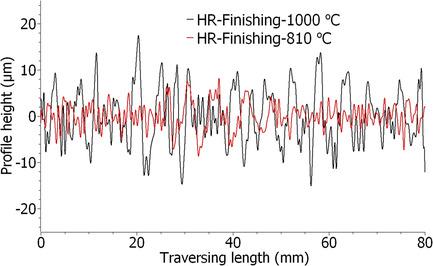当前位置:
X-MOL 学术
›
Steel Res. Int.
›
论文详情
Our official English website, www.x-mol.net, welcomes your feedback! (Note: you will need to create a separate account there.)
Influence of Hot Rolling Finishing Temperature on Texture and Ridging Resistance in Stabilized Ferritic Stainless Steels
Steel Research International ( IF 2.2 ) Pub Date : 2021-03-03 , DOI: 10.1002/srin.202000695 Suresh Kodukula 1 , Heikki Kokkomäki 1 , Esa Puukko 1 , David Porter 2 , Jukka Kömi 2
Steel Research International ( IF 2.2 ) Pub Date : 2021-03-03 , DOI: 10.1002/srin.202000695 Suresh Kodukula 1 , Heikki Kokkomäki 1 , Esa Puukko 1 , David Porter 2 , Jukka Kömi 2
Affiliation

|
A systematic study is conducted on a 17% Cr dual stabilized ferritic stainless steel (FSS) to study the evolution of texture during hot rolling and its effect on ridging resistance after cold rolling and annealing. Hot rolling is conducted on a 4-high laboratory rolling mill with finishing temperatures in the range of 1000–810 °C to cover the evolution of microtexture under both conventional hot rolling conditions and when using low finishing temperatures. Subsequently, the hot-rolled coils are cold rolled and annealed to the same final thickness. The microtextures of the samples are evaluated at each process step using scanning electron microscopy combined with electron backscattered diffraction (SEM-EBSD). Lowering the hot rolling finishing temperature results in the formation of intragranular shear bands, which strengthens the γ-fiber in the texture after subsequent annealing of the hot-rolled material. After cold rolling to a reduction of 78% followed by final annealing, the microtexture in the final product correlates with the microtexture after hot rolling. The resistance to ridging in stabilized FSS improves by lowering the finishing temperature during hot rolling. This study shows the importance of the hot rolling process conditions in improving the texture inherited from the casting of FSS.
中文翻译:

热轧精轧温度对稳定铁素体不锈钢织构和抗起皱性能的影响
对 17% Cr 双稳定铁素体不锈钢 (FSS) 进行了系统研究,以研究热轧过程中织构的演变及其对冷轧和退火后抗皱性的影响。热轧在 4 辊实验室轧机上进行,精轧温度范围为 1000-810 °C,以涵盖在常规热轧条件下和使用低精轧温度时微观组织的演变。随后,热轧卷被冷轧并退火至相同的最终厚度。使用扫描电子显微镜结合电子背散射衍射 (SEM-EBSD) 在每个工艺步骤中评估样品的微观纹理。降低热轧终了温度会导致晶内剪切带的形成,从而加强了热轧材料随后退火后织构中的γ-纤维。冷轧至压下率 78% 并进行最终退火后,最终产品中的显微组织与热轧后的显微组织相关。通过降低热轧过程中的精加工温度,可以提高稳定化 FSS 中的抗起皱性能。这项研究表明了热轧工艺条件在改善 FSS 铸件继承的织构方面的重要性。
更新日期:2021-03-03
中文翻译:

热轧精轧温度对稳定铁素体不锈钢织构和抗起皱性能的影响
对 17% Cr 双稳定铁素体不锈钢 (FSS) 进行了系统研究,以研究热轧过程中织构的演变及其对冷轧和退火后抗皱性的影响。热轧在 4 辊实验室轧机上进行,精轧温度范围为 1000-810 °C,以涵盖在常规热轧条件下和使用低精轧温度时微观组织的演变。随后,热轧卷被冷轧并退火至相同的最终厚度。使用扫描电子显微镜结合电子背散射衍射 (SEM-EBSD) 在每个工艺步骤中评估样品的微观纹理。降低热轧终了温度会导致晶内剪切带的形成,从而加强了热轧材料随后退火后织构中的γ-纤维。冷轧至压下率 78% 并进行最终退火后,最终产品中的显微组织与热轧后的显微组织相关。通过降低热轧过程中的精加工温度,可以提高稳定化 FSS 中的抗起皱性能。这项研究表明了热轧工艺条件在改善 FSS 铸件继承的织构方面的重要性。



























 京公网安备 11010802027423号
京公网安备 11010802027423号